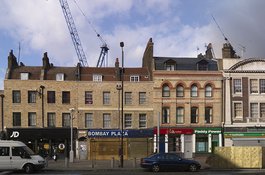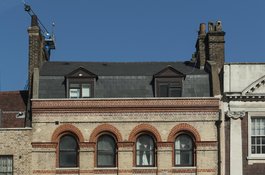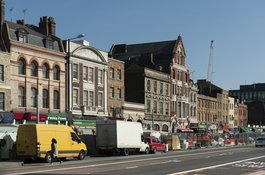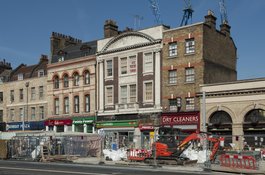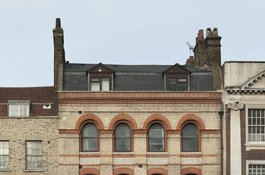The Grave Maurice in 1844
Contributed by stephen.r.harris on Dec. 21, 2016
On the Proceedings of the Old Bailey website we can read the account of the
1844 trial of Timothy Tobin and John McNally. The pair were found guilty of
grievously assaulting a fellow customer after leaving the Grave Maurice pub.
The account gives some colour to what the pub and its customers were like at
this time, before it was rebuilt in 1874. The pub was described as being
large, with a Parlour and a Taproom. Customers on the night in question
included John Hatfield, a builder's labourer nicknamed Long Jack, McNally, an
engine driver or stoker who wore a paper cap, Tobin, who was wearing a glazed
hat, and (possibly) Patrick Fining, who said he lodged nearby and had shared
three pots of porter in the pub with friends and stayed behind to listen to a
man sing a song when his friends left. Serving in the pub were potboy James
Davis and landlord Thomas Hill.
Local landmarks referred to in the case were the Blind Beggar pub and Gilass'
butter shop on Whitechapel Road, and a pub at the corner of North Street (this
must be the Queen's Head, North Street being a former name for Brady Street).
The former Grave Maurice public house, 269 Whitechapel Road
Contributed by Survey of London on Nov. 28, 2017
A pub called the Grave Maurice was present on this site by the 1720s on a
lease dating from 1670. The name, probably commemorating Prince Maurice of the
Palatinate, who fought on the Royalist side in the English Civil War, suggests
seventeenth-century origins. Joseph Fairfax was the proprietor by 1730. After
his death in 1749, his son, Robert Fairfax, followed and in 1754 married Ruth
Ireland, the sister or niece of Samuel Ireland, who developed the property
lying westwards after 1767, when other property of Ireland’s was auctioned
from the pub.
What had already been a large pub was rebuilt in its surviving form in 1873–4,
possibly anticipating the arrival of the East London Railway. The proprietor
was John Billinghurst of the George Hotel on the Strand, and his builder was
Robert Mann of Kentish Town. The name and date are still prominent in the
window aprons under the upper storey, amid polychrome brickwork that includes
gauged arched heads in a double-storey arcade. There were additions to the
rear in 1936, for Truman Hanbury and Buxton Ltd. The Grave Maurice is said to
have been frequented by the Kray brothers in the 1950s and early 1960s. It
closed in 2010 and by 2014 had been converted for two shops below flats.
Drinking in the Grave Maurice
Contributed by mbarrhamilton
The last time I remember going for a drink in this pub must have been in about
2005. Pubs in the area were closing rapidly but the Grave Maurice appeared to
be desperately hanging on. The interior was delightfully gloomy and there was
an air of dilapidation. The clientele appeared to be mainly of Irish descent
and some form of billiards was being played.
A 'hospital' pub
Contributed by IsobelWatson
My memory of this place was before it had become allowed to become
dilapidated, and in fact was quite well-cared for, if still (by the 1980s-
1990s) a bit old-fashioned. The walls had extensive wooden panelling - think
inter-war; quite light in effect - and above a high-level shelf round the
walls was ranged an extensive collection of ceramic plates. It was extremely
popular with off-duty Hospital staff; no criticism of them, but the consequent
smoky fug (in those days) made it very unattractive to a non-smoker.
